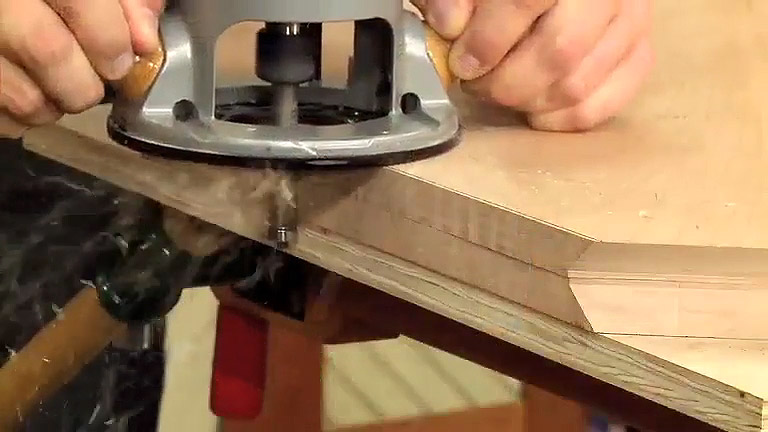Even though it sounds simple, getting an accurate crosscut can be a challenge. That’s where I turn to a couple of helpful accessories. The auxiliary fence I use is just a strip of plywood that extends beyond the blade. This way, the workpiece is fully supported on both sides of the blade, minimizing any chance of tearout. Plus, the cutoff is pushed safely past the blade. Adding some self-adhesive sandpaper to the fence keeps the workpiece from shifting during the cut. As the blade exits the bottom of the workpiece, the teeth can cause tearout — especially with the wide opening in most table saw inserts. The solution to this is a zero-clearance insert. It supports the workpiece right up next to the cut.

When I need to make several identical parts, measuring each part takes time and doesn’t provide consistent results. Instead, I use a stop block that’s L-shaped, sits square, and is easy to adjust. To make repetitive cuts, clamp your stop block in place. Then, all you have to do is butt each workpiece against the block, and you’ll get consistent pieces quickly.

A stop block attached to the miter gauge fence won't work for short pieces. This method puts my fingers too close to the blade. To make the cuts more safely, I simply flip the stop block over and clamp it to the rip fence. By clamping the block in front of the blade, you can still position each workpiece identically. As you make the cut, a gap opens up between the workpiece and the fence. This provides clearance so the cutoff isn’t trapped.

Another way to improve your crosscuts is to use a saw blade specifically designed for the task, like this crosscut blade. While a typical saw blade may have 40 or 50 teeth, a dedicated crosscut blade may have 80 or more. Plus, the teeth are ground with alternating top bevels. So what does all this mean? Well, the extra teeth mean each one is taking less of a bite. So it’s not so aggressively tearing away at the fibers. And the alternating top bevel grind means a smooth shearing cut through the fibers. The end result is less splintering and clean crisp edges on both sides of the cut.











